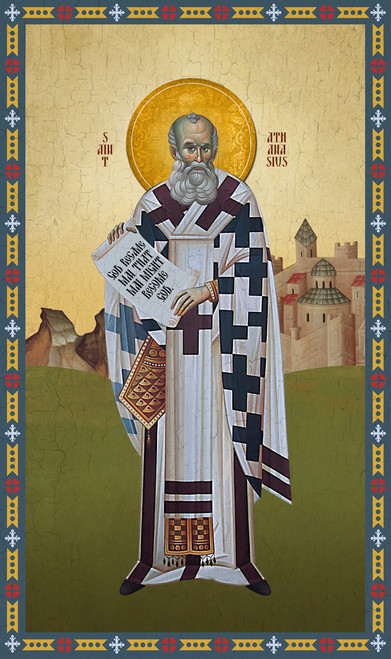Commemorated August 25/September 7 (repose) and November 2/15 (translation of relics)
St. Ebba (Aebbe, Ebbe), also known as “Ebba the Elder”, was born in about 615 in the royal family of the Kingdom of Bernicia in northern England. Her father was King Aethelfrith, who ruled Bernicia from 593, along with Deira from 604 until his death in 616 (the amalgamation of these two was to be called Northumbria). Among her brothers were St. Oswald the martyr, and Oswiu, kings of Northumbria. After her father had been killed at the Battle of Bawtry, St. Ebba’s mother Acha took her children to the kingdom of Dalriada, situated in the north-west of Scotland and founded by Irish Gaelic settlers. Then Princess Ebba was a little girl. Meanwhile, Edwin, St. Ebba’s maternal uncle who converted to the faith much later, assumed the Northumbrian throne. At that time Dalriada was a stronghold of Christianity (by contrast with the largely pagan Pictland in the rest of Scotland and Northumbria in England), and numerous spiritual and monastic centers sprang up there, the most famous being the Monastery of Iona founded by the Irish St. Columba in 563.
Under the protection of Dalriadan kings, having absorbed the Irish spiritual tradition, St. Ebba and her kinsmen were converted to Christ and baptized.
In the 630s, when her brother St. Oswald became the king of Northumbria and a champion of the Orthodox faith, St. Ebba decided to return to her homeland and help him evangelize the Northumbrians, most of whom were still pagan. In 635, on St. Oswald’s initiative the Irish St. Aidan, a former student of Iona, was sent to Northumbria and founded Lindisfarne Monastery, which became a beacon of Orthodox monasticism, culture and learning.
St. Ebba was beautiful and had suitors, but the princess chose to become the bride of Christ and took the veil in about 640. According to late tradition, she was tonsured on Lindisfarne by St. Finan, who later became the successor of St. Aidan as its abbot and bishop. No doubt, St. Aidan himself was among St. Ebba’s spiritual mentors and friends.
Well instructed in monastic life, with her brothers St. Oswald and Oswiu’s assistance the maiden of God in due course established her famous double monastery in Coldingham (its original name, according to St. Bede, was urbs Coludi, meaning “Colud’s fort”, and later became known as Colodaesburg), with two communities of monks and nuns who lived separately and prayed in the same church. At that time, Coldingham was part of Northumbria in England; now it is in the Scottish Borders area of Scotland.
Alas, we know little about the activity of St. Ebba as abbess, but she was noted for her wisdom, exemplary holy life and preaching that contributed to the conversion to Orthodoxy of many pagans. It is likely that in governing Coldingham St. Ebba imitated her celebrated contemporary St. Hilda, who was abbess of Whitby in Northumbria at the same time.
Ebba’s monastery was situated some twenty-five miles north of Lindisfarne in a very austere place: Coldingham sits on the North Sea coast off south-eastern Scotland, with cold weather, heavy storms and large waves. Until recently, historians argued as to where exactly St. Ebba’s monastery was located. Some maintained that it was in what is now the village of Coldingham, and others—that it was at the Kirkhill overlooking the rocky promontory of St. Abb’s Head (named after St. Ebba) in St. Abbs village with cliffs right by the sea. The archeological excavations led by DigVenturesand carried out from 2017 to 2019 proved that her monastery was in Coldingham—exactly where the present-day Coldingham Priory stands.
Exact Dimensions:
Small ~ 3.6x6”
Large ~ 5.9x10”
X-Large ~ 10x17”
Please contact us for larger sizes.







